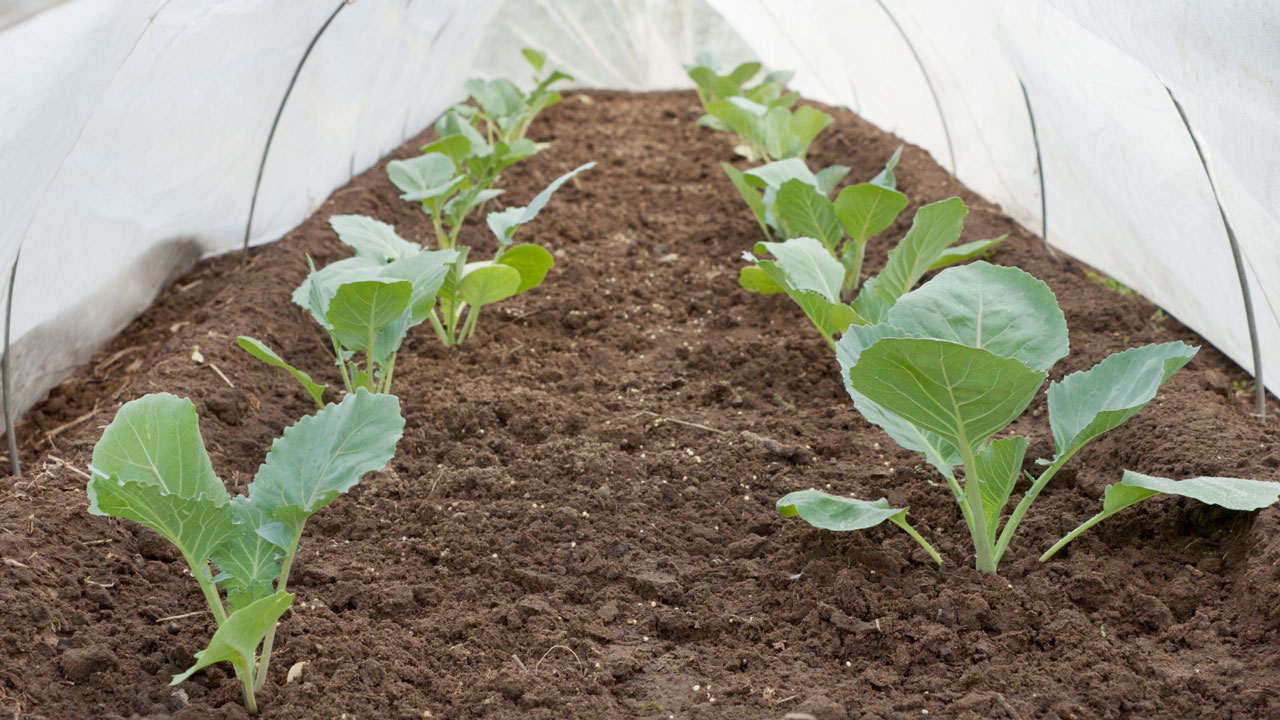Plant Now for Fall and Winter Veggies
Aug 1st 2017
Start prepping your soil for a fall garden, enjoy fresh veggies through late summer and fall. Start by removing weeds and old vegetables, turn the top of soil 4-6 inches, and add compost to your garden bed. Don’t dig the bed too deeply as it will upset the beneficial microbes in the ground that aid the veggies in their attempt to pull nutrients from the soil. Once the seedlings are 4-5 inches tall, you should apply a layer of mulch to keep the ground warm, moist, and to keep the weeds down. Adding organic fertilizer will also help replenish the soil and give the soil back some of the nutrients it needs for your fall crop.
If you have a greenhouse or high tunnel or plan to acquire one, you already realize the value of winter crops. More than half of Dripworks customers live in zones 8 and 9 which stretches from the west coast into the southwest, Texas, and through the southern states to North Carolina. At the lower elevations in these states, a hard frost usually doesn’t hit until December which gives you an added season of fresh vegetables.
Planting a cover crop that will grow through the winter will enable you to till in this enriching cover crop come Spring, adding nutrients to the soil that can be needed next year. A mixture of buckwheat, turnips, annual ryegrass, and red clover (my favorite as the bees love it!) will provide many benefits such as fixing nitrogen in the soil and breaking up dense soil. Spring all you’ll need to do is dig the cover crop into your soil.

Cool weather crops such as chard, kale, carrots, spinach, lettuce, cilantro, brussels sprouts, cabbage, beets, and onions would be good choices. If starting from seed, check the back of the seed packet for the number of days to maturity for that plant. These veggies will do well with a mulch of straw or fabric like GCI row cover. This row cover will raise the temperature underneath it and will speed up germination and seedling growth plus protect your plants from a late Fall frost. This material also provides shade that protects the young starts from getting sun burnt or drying out and from insect damage. If you combine GCI row cover with the addition of some fresh compost, even more heat will be created. Most of these vegetables even taste sweeter when they are harvested under more temperate conditions in October and November.

A small greenhouse such as the Solexx greenhouse in the corner of your yard will allow you to grow through the winter. Using an electric seed mat under the plants will give heat from below. A passive way to help heat the greenhouse is to line the south wall of the greenhouse or high tunnel with 5-gallon buckets filled with water raised off the ground with cinder blocks. The daytime sun will heat up the water which will be given off at night to the interior of the structure. A homemade high tunnel can be easily built using PVC pipe and covered with rip stop greenhouse covering. The Clear Span High Tunnels are available online at dripworks.com.
Don’t forget about perennial herbs. Best planted in the early Fall, herbs can be used along with the foods you grow in your garden for added flavor. One of the hardiest, fragrant, durable, and gorgeous is rosemary. Lavender is another perennial herb that will give you many years of visual pleasure. Borage can be easily grown and can be steeped as a mood lifting tea. Thyme is another excellent herb that adds a savory note to foods and can grow over winter without a problem in zones 8 & 9. The last herb I’ll mention is garlic which is best planted in October and harvested towards the end of June. There are many varieties of all these herbs so check out some at a good local nursery.
Plan now for a garden that’ll have something to offer you in all but the coldest days of Winter.



